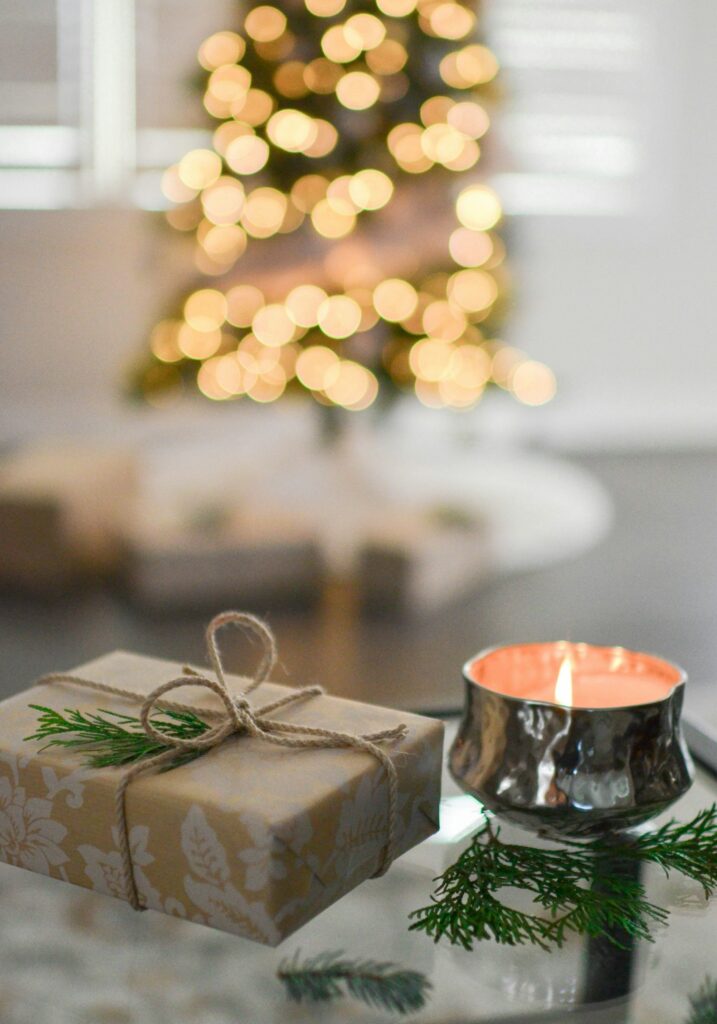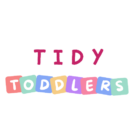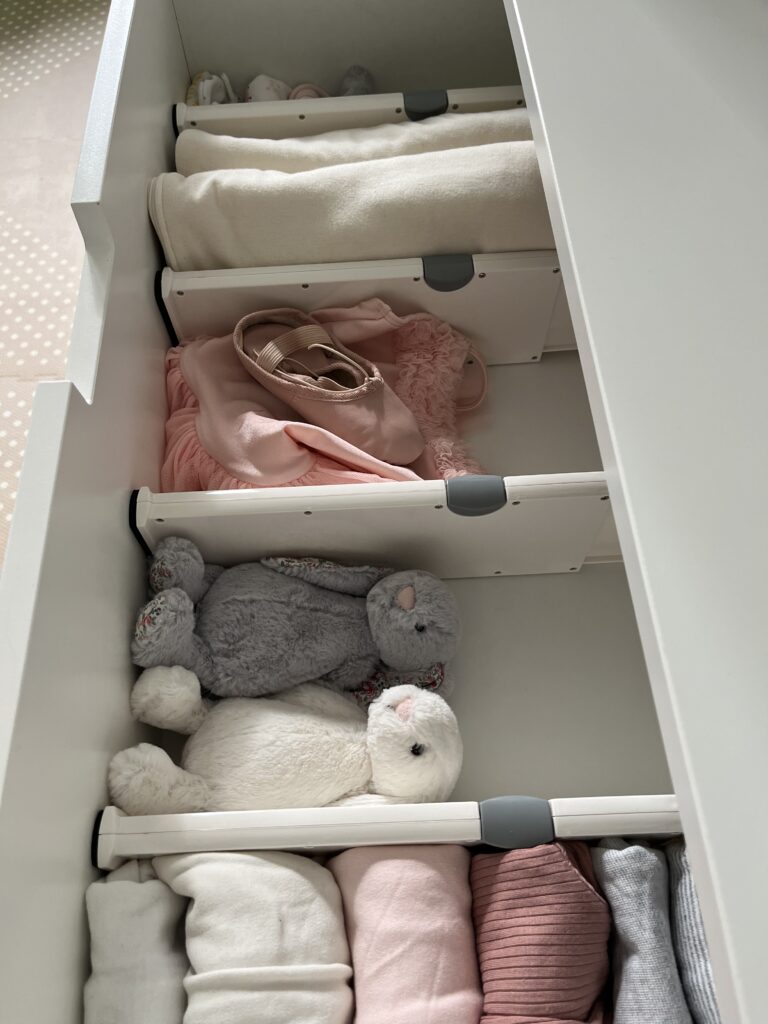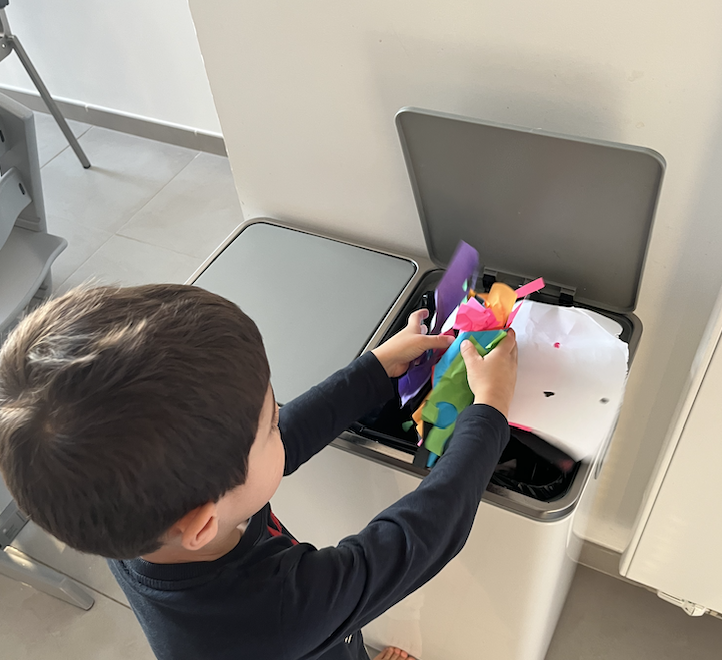How to Prepare a Clutter-Free Christmas with Toddlers

Christmas is one of the most magical times of the year, especially with toddlers in the mix. Their excitement over twinkling lights, festive decorations, and, of course, presents is contagious. But for many families, it can also bring an avalanche of toys, clutter, and stress. For many parents, the magic of Christmas feels at odds with the reality of “stuff” piling up.
As a KonMari consultant and toddler parent, I know this all too well. Since transforming my home, I’ve become acutely aware of how our gift-heavy culture impacts us and our environment. I want my children to experience the wonder of Christmas, complete with presents under the tree, but I also strive to reduce overwhelm — for them and for me.
With the right approach, you can enjoy a Christmas season that’s both joyful and (more) clutter-free. Here are practical tips, backed by research and personal experience, to help you navigate the holidays and prepare for a clutter-free Christmas with toddlers this year.
The holiday dilemma
For many families, the holidays mean piles of presents, largely toys.
Even if we know how good less is for our children (and the planet), we don’t want to be the grinch who banned all the gifts. The joy of watching your child receive a long-desired toy genuinely warms your heart. It’s simply magical.
Discouraging your loved ones from including your children in the gifting tradition is not only awkward, you’d also be depriving them of the joy of giving. They, too, want to be part of your child’s Christmas experience.
Asking everyone for experiences instead of things isn’t the magical solution either, as 1) gift-givers don’t always listen and 2) unlike a tangible object, the concept is still abstract to toddlers. Not to mention cultural norms and societal pressures that place emphasis on physical gifts.
Nowadays, even the youngest of children seem keyed in on “more, more, more”. Coupled with doting grandparents and others keen to indulge, parents are left to handle the clutter and overwhelm caused by today’s excessive gift-giving culture.
So, how do we balance the magic of giving with the need for simplicity?
Preparing your home and mindset
1. Clarify your why
Why do you believe in a clutter-free Christmas? What values do you want to reinforce through taking the focus away from the gifts? How do you want to feel as you watch your child unwrap their presents?
Hone in on your “why” beyond the surface-level. Visualise your clutter-free home and your simplified family life, feel all the emotions.
Pro tip: write down your “why” or choose a picture that represents it. Keep it visible so it can support you as you navigate your way to a clutter-free Christmas.
2. Create anticipation and excitement
Get your child involved early by helping them create a wishlist. Grab a toy catalogue or two and let them choose their favourites. If you’re feeling brave, you could even take your child to the toy store for a more hands-on experience — but remember, the goal is browsing, not shopping.
Letting them fantasise about the toys, imagining how they will play with them, and changing their minds helps build anticipation. And according to Psychology Today, the emotional benefit of anticipating something positive can often outweigh the pleasure of the actual experience. For toddlers, who are still learning about delayed gratification, the build-up is just as important as the event itself.
Moreover, toddlers love feeling in control of their choices, and letting them explore and pick gifts helps them feel empowered.
3. Tidy to prepare
As a KonMari consultant, the best advice I can give, unsurprisingly, is to tidy before the gifts arrive. It’s a great way to take stock of what your child already has, create physical space for incoming items, and nurture a healthy relationship with belongings.
The dos and don’ts of pre-Christmas decluttering with your toddler
5 dos to prepare a clutter-free Christmas with your toddler
Declutter together
Take the time to declutter not just your child’s belongings, but your own too! It’s important that they see tidying as something we all do, not just something that happens to them. This also sets a positive example for them to follow. Remember, 80% of a toddler’s learning happens through observation.
Explain the why — emotion over logic
While personifying objects might sound a little “woo-woo”, it often resonates with young children because it speaks to their emotions. For example, explaining that having a big tipi in the living room would mean the train set has less space to spread out. Or saying “Your green truck loves to play, but if you get another one, it might get sad because it won’t get to play with you any more.”
Help them get excited about the why
Instead of treating tidying as a chore, connect it to a direct, exciting result. If they’re getting a new doll, for instance, you can prepare a special place for it to sleep and plenty of space to play together. This helps them concretely understand the “why” behind tidying, making it more meaningful.
Emphasise gratitude and giving, not discarding
Many organisations are currently collecting gently-loved toys for children in need. Donating the items your child no longer wants and explaining that another child will enjoy them can turn discarding a positive experience. You can event take the items to charity together.
Cultivate a healthy relationship with material things
Instead of teaching your child how to tidy, focus on teaching them why caring for their belongings matters. By showing our children how to appreciate what they have, we’re teaching them to value quality over quantity, to be sensitive to their feelings above societal norms, to be mindful about what they bring into their lives, and to treat things with care and respect.
5 don’ts to prepare a clutter-free Christmas with your toddler
Focus on the quantity discarded
Avoid the trap of decluttering just to make room for more things. Phrases like “if you get rid of the police car, you can get a truck” don’t encourage mindful tidying. This goes for parents too — there’s no need to replace like with like.
Threaten, guilt-trip, or force
No threats like “Santa won’t come if you don’t tidy!” Tidying should be about creating a sense of ownership and responsibility, not fear. When we approach tidying with a positive mindset, it fosters a lasting, joyful relationship with our belongings.
Discard behind their backs
It might be tempting to quietly remove toys that your child no longer plays with, but this erodes trust. Instead, involve them in the process and let them make the decisions about what to keep and what to let go of. Children even as young as 18 months know and can communicate what sparks joy for them. This process builds confidence and helps them understand that tidying is something they do for themselves.
Don’t start with toys
For children, toys can be emotionally charged, making them difficult to part with. I suggest following the KonMari order: clothes, books, komono (miscellaneous items like DVDs, craft supplies, sports gear), and finally sentimental items including toys. These go from easiest to hardest, so the process should go much more smoothly.
Don’t do it all in one go
To maximise your child’s focus and cooperation, and to make tidying a meaningful act rather than a chore, choose a quiet moment when your child is calm, and neither tired nor hungry. I find 15 to 20-minute sessions work well, so as to keep the positive energy throughout.
Managing gift overload thoughtfully
Even with the best intentions, a flood of gifts is inevitable during Christmas. Here’s how I manage it:
- Honest communication: throughout the year, and especially in the lead-up to Christmas (and birthdays), I’ve spoken openly about my discomfort with over-gifting — and my definition of it. I find it helps to build the narrative by regularly sharing updates with family and friends on the experiences the children love. This keeps the conversation light yet clear and emphasises our family values around simplicity and creating memories over accumulating things.
- Controlling the flow: I’m proactive about asking for specific gifts and sometimes set some aside before the kids even see them. These may go to charity, be regifted, or be saved for other occasions. It’s actually pretty handy having a stack of ready-to-go gifts, just make sure to pre-delineate the space you will dedicate to this (we have a 26L box).
- Cutting some slack if my child receives a gift I didn’t expect or wouldn’t have chosen myself. It always happens, and I remind myself it was given with love, so I accept it with grace. And I’m learning to ease up on myself too — maybe the gift will be forgotten soon, break before long, or perhaps it’ll surprise me by sparking an interest in my child that I hadn’t considered.
A word on mum guilt
Reading the above, you might have felt a creeping sense of discomfort or dread.
Let’s be honest, putting your foot down to impede the flow of gifts or nudging your toddler to let go of previously-loved objects can be discomfiting to say the least. In some families, these are hard discussions that can veer into conflict.
But remember: identifying and prioritising what’s truly important to us is a core part of parenting. Whether it’s owning less, setting limits on screen time, cooking home-made meals, or raising strong girls, we instil our values in our children.
Don’t feel guilty about asserting what’s important to you. If we don’t actively protect our family’s space and values, we risk feeling overwhelmed and disconnected.
Simply put, your home, your rules.
A clutter-free Christmas is a memorable Christmas
A clutter-free Christmas with toddlers isn’t about perfection. It’s about shifting the focus from “stuff” to connection, joy, and making memories.
After all, you probably remember the excitement of opening presents as a child, but how many of those gifts are actually memorable now? And how many of last year’s presents are still exciting your child today?
To put this all into perspective, ask yourself: How do I want to remember this Christmas?


